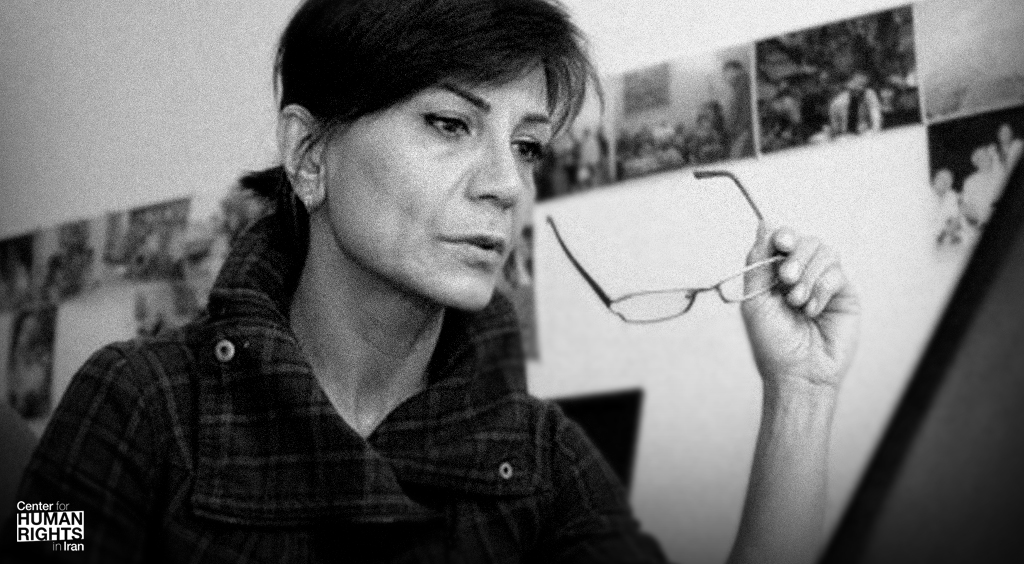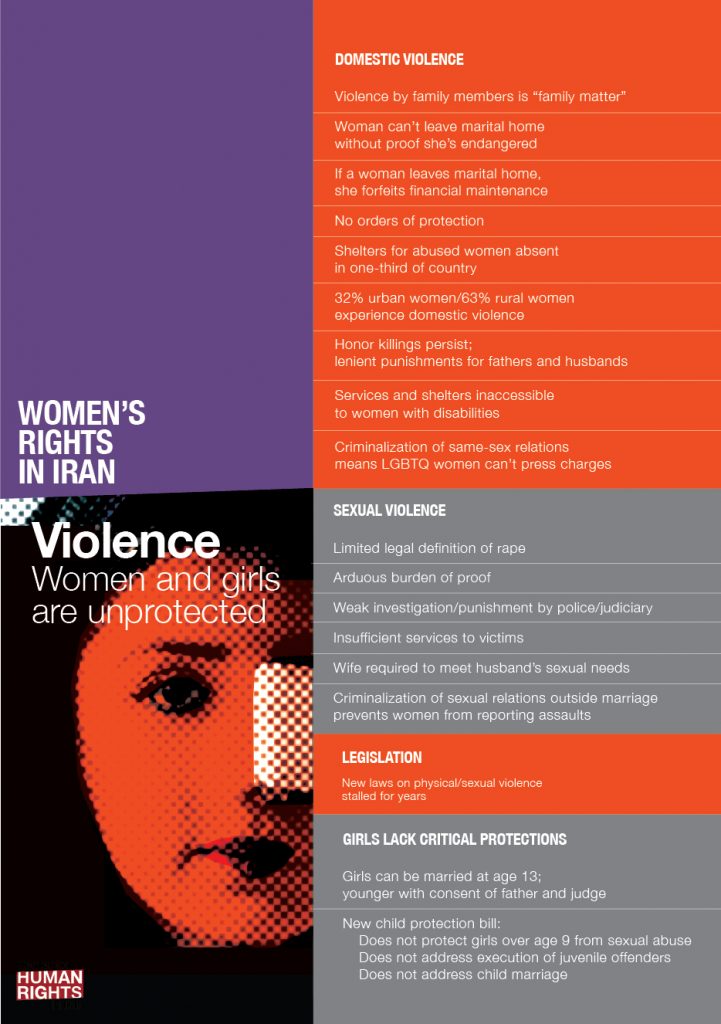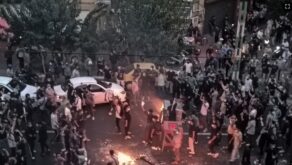CHRI – In 1980, on International Women’s Day, 22-year-old university student Mansoureh Shojaee joined one of Iran’s largest street protests against the compulsory hijab. This was one year after the revolution, when Supreme Leader Ayatollah Ruhollah Khomeini had deemed the Islamic covering mandatory for all women in public, and when all Iranians were still coming to terms with their drastically changed lives under the newly formed government.

Remembering those first few years of the revolution she wrote, “Everybody was in one shape: a male-dominated shape! This portrait scared me; I felt I was living on a military base with no signs of femininity. That fear became my first motivation to think about the female position and women’s struggles.”
While living and working in Iran, Shojaee co-founded initiatives focused on women’s rights including the One Million Signatures Campaign, which aimed to promote gender equality in the country, and, after moving to the Netherlands, founded the Iranian Women’s Movement Museum, which currently features handcraft by women incarcerated in Tehran’s Evin Prison. More than 40 years later, as both an author and researcher, she remains a leading voice in the Iranian women’s movement, which she sees as a multi-faceted, “continuous process.”
“[I]t would be wrong to limit this movement to a specific period,” she told the Center for Human Rights in Iran (CHRI) while discussing ongoing opposition to the state’s compulsory hijab law. “During all these 40 years, women have never abandoned their demand to liberate their bodies from discrimination.”
Read excerpts of the interview below.
CHRI: Are we are at a historical juncture in the women’s struggle against the Islamic Republic of Iran’s compulsory hijab law?
Shojaee: I cannot single out which period in the past 40 years has been more important in the Iranian women’s struggle against the mandatory hijab. Not because I don’t agree with the importance of the current state of women’s struggles, but I just don’t believe in that kind of categorizing.
When we talk about protests against the forced hijab, we must note that this movement is the result of a continuous process. Basically, “movement” is partially defined by “continuity.” Therefore, it would be wrong to limit this movement to a specific period. This movement has been going on for 40 years. Of course, at some points it has been more or less intense for various reasons, depending on the extent of suppression and to what degree women could be active, and other issues. That’s how we got to where we are today.
During all these 40 years, women have never abandoned their demand to liberate their bodies from discrimination. When we were active in the One Million Signatures Campaign and other struggles, we were very cautious in our approach to the issue of the compulsory hijab because of the security pressures. But even then, ordinary women were not cautious at all about [strict observance of the hijab] in their daily lives. They have always displayed courage and bravery. Regardless of the campaigns against the forced hijab, Iranian women from all walks of life have continued to tread this path.

Fact Sheet: Women’s Rights in Iran
One of the most important reasons for the bitterness in the current battles against the forced hijab is that we are disillusioned by everything; we are disillusioned by the prospect of changes in laws and reform; we have lost hope in gaining the right of guardianship for our children; we have lost hope in gaining equality in blood money and inheritance; we have lost hope in gaining the right to divorce. We have become disillusioned by all the things we haven’t gained through the law. We have been abandoned. The only weapon Iranian women have left is their body.
For instance, women may or may not be given the right to guardianship of their children according to the country’s laws. But when women decide to turn their bodies into a weapon and jump into the middle of the ring in the fight against the forced hijab, that is their personal decision. The hijab issue has become so internalized, and women are feeling so isolated, that they are using their body to gain the freedom to wear what they want.
CHRI: How has the government responded?
Shojaee: The state has realized it cannot do anything about this. Women’s independence and individual courage, and the movement’s level of organization and self-leadership, have scared the Islamic Republic. [The government in Iran] has tried to link the movement to other currents hundreds of times; sometimes to [dissident in exile] Masih Alinejad, then to foreign forces or so-called outsiders, or to Baha’is [minority faith] and countless others.
However, this strategy cannot, and has not been able to make a dent in opposition to the mandatory hijab because it is a continuous day-by-day movement; it is part of women’s daily life.
I would like to refer to one of Dr. Janet Afari’s recent articles titled, “From Bedrooms to Streets: The Rise of a New Generation of Independent Iranian Women,” in which you can clearly see how the geographies of Iranian women’s struggle against the compulsory hijab are defined. The government cannot overtake these spaces, and this has generated fear. In fact, with its outdated countermeasures, the government has become powerless. There have been so many forced confessions extracted from political prisoners since the beginning of the revolution [in 1979] that basically the so-called “confessions” are not taken seriously anymore; they are laughed at.
In 2008, when [political activist] Dr. Mohammad Maleki was arrested and held in Evin Prison, I happened to be there at the same time. I used to see him with his wife in the visitation hall sometimes. Once I heard his wife say that when the security agents came to arrest him, she jokingly told him to “give a televised [forced-confession] interview so that you can quickly come back home!” My point is that the forced-confession trick has gotten so old, threadbare, and scandalous that even in 2008, political and civil activists saw it as a joke.
CHRI: Iranian officials avoid discussing the discriminatory nature of the forced-hijab law by framing it as a religious requirement (even though all women are forced to wear the hijab in public regardless of their religious beliefs). What’s your response?
Shojaee: When we are dealing with a state whose laws are based on Sharia (Islamic) law, inevitably the law requires the hijab to be compulsory. No legislator will say this law is discriminatory. But, in theological terms, there are some subjects that are “in a place of dispute” and the hijab is one of them. In the One Million Signatures Campaign, we tried to use this division to hold meetings with senior theologians in [the city of] Qom and argue that matters of dispute, such as the hijab, should not be made into law. I want to emphasize that at various times, women even went as far as using these small opportunities to have discussions with theological institutions.
CHRI: What do you make of the fact that members of the political elite, such as former President Mahmoud Ahmadinejad, have criticized the mandatory hijab law?
Shojaee: Women’s bodies have always been parading grounds for authoritarians who have either covered or undressed them. Using women’s bodies as a means to an [political] end has not manifested only in mass advertising, for example, or in vulgar movies. This tactic has also been used by states or authoritarian politicians like Ahmadinejad to promote themselves or gain credibility among a certain sector of society and to create an identity.
Yet their reactions and comments are not actually in favor of women’s liberation; they are only taking advantage of these issues for political gain. I refer you to a quote by [Iranian human rights lawyer] Nasrin Sotoudeh heard in a documentary about her life by Jeff Kaufman called “Nasrin.” In one part, Sotoudeh addressed one of her clients, who had been brought to court for opposing the mandatory hijab and said: “It is of no use to us if, for example, the government says that wearing the hijab is no longer necessary because the same government that says the hijab is not mandatory today could reimpose the order again tomorrow.”
Therefore, we should not take seriously or tie our hopes to promises and statements about the hijab made by politicians. We must work to repeal the mandatory hijab law through civil action and peaceful movements. Until then, we should not be fooled by any of these promises.
CHRI: In November 2021, a woman died while working at a factory in Iran after her hijab got caught in a spinning machine. Laborers throughout the country are forced to operate in unsafe conditions while being denied the right to organize to demand safety measures and basic rights. Accordingly, the government has deemed the hijab mandatory even in situations where wearing one could be deadly. Could the forced-hijab issue be defined in connection with other forms of discrimination against women?
Shojaee: Why should we link different forms of discrimination? I believe that each form should be protested to try to eliminate it.
What was the main reason for the bitter death of that female worker? Was it because she was a laborer or because she was forced to wear a hijab? The answer is clear: She became a victim of the spinning machine because of her mandatory hijab. This very dramatic death could be attached to the workers’ movement, or the struggles of the oppressed. However, in my opinion, while we can always learn from the theory of intersectionality, we should pay attention to issues separately as each fight will make us stronger.
CHRI: How do political forces inside Iran and abroad view the issue of the mandatory hijab? Have views changed in recent years?
Shojaee: Since the early years of the revolution [in 1979], I have been an objective witness to the activities of many political currents because of my interest, pursuit and struggles in fighting tyranny. I felt the suffering of women’s loneliness with all my heart.
Before the revolution, political groups took a cruel approach, which did not prioritize women’s issues. Even though women fought side by side with men during the revolution and suffered imprisonment in Evin and Gohardasht prisons, as well as in Qasr Prison’s women’s unit and other detention centers, after 1979, male politicians turned their backs on women’s widespread protests against the compulsory hijab. As a result, both men and women were suppressed.
In those early years, some political factions, which believed that the Islamic Republic would sanctify anti-imperialist stances and permit them to be politically active, decided that under those circumstances, they should not respond to the government’s behavior toward women and instead focused on their anti-imperialist activities. But very quickly, their members were arrested and suppressed by the Islamic Republic.
Meanwhile women were continuously and constantly discriminated against and oppressed. In the same years that political factions closed their eyes to women’s protests against the mandatory hijab, many women were fired from their jobs because of the hijab issue, and many women faced harassment: from being beaten to being spat on. I was one of the victims of these insulting and humiliating behaviors.
Which male politician paid attention to these issues or took a stand against them in those years? Concerning political groups, women at that time felt a deep sense of loneliness in their struggles against the forced hijab. Unfortunately, I must say that this point of view still exists to some extent among some political currents today, more often in post-colonial trends.
For example, some say, “in today’s conditions, the issue of working women is more important than the campaign against the mandatory hijab.” Well, this is dangerous because it’s the same type of thinking we witnessed in the first years of the revolution. During that time, the excuse some politicians made for turning away from women’s struggles against the forced hijab was that the fight against imperialism was more important. But today, the excuse is reliance on post-colonial concepts, especially intersectionality issues, based on which intertwining discriminations are dealt with all together.
I completely agree with discussions that various discriminations are intertwined. Basically, the intersectionality theory is one of the most progressive and up-to-date feminist theories on a global scale, but it does not apply in local situations, such as in Iran. We must ask ourselves which of the women who wrote, analyzed and critiqued this theory have experienced living in a country facing the issue of the compulsory hijab?
CHRI: Some political analysts have argued that the future of political change in Iran will follow the path of the women’s movement. Do you agree?
Shojaee: This is a proven proposition. One cannot disagree with it at all, as reality confirms it. You cannot pretend to be a democracy and ignore the rights of women, or half of all citizens. How can any political movement that believes in democracy imagine ruling a country without respecting women’s rights?
Democracy should not be gender-blind. The Universal Declaration of Human Rights (1948) was gender-blind, and for this reason, the supplementary Convention on the Elimination of Discrimination Against Women was written nearly 30 years later in 1979 to introduce gender sensitivities into the Universal Declaration of Human Rights. Only then did we say that the declaration had been completed.
Democratization is not possible without paying attention to equality and women’s rights, both in terms of demands concerning women’s bodies and in terms of legal, political and social demands.
Read this interview in Persian
 Shabtabnews In this dark night, I have lost my way – Arise from a corner, oh you the star of guidance.
Shabtabnews In this dark night, I have lost my way – Arise from a corner, oh you the star of guidance.



